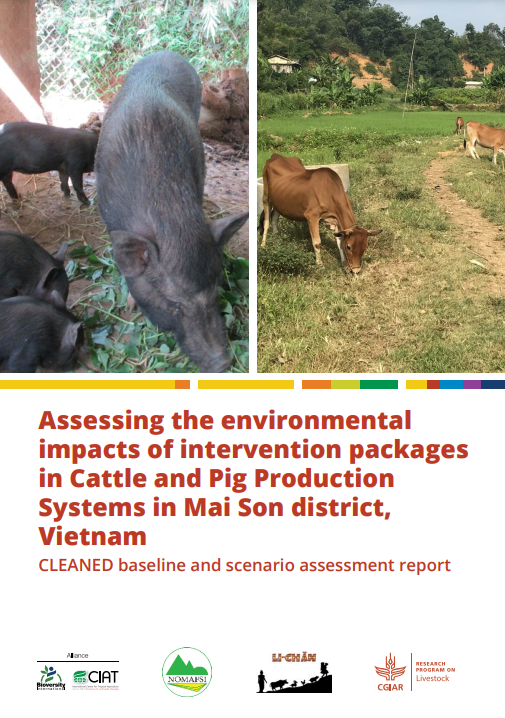Son La is the largest mountainous province located in the northern highlands of Vietnam with a total area of 1.4 million ha and a total population of 1,252,700 (88 people/ km2) (Douxchamps et al., 2021). The northern highlands refer to the northern provinces with a high elevation characterized by mountains, uplands and midlands (Duteurtre et al., 2020). About 88% of Son La population lives in the rural areas (Son La Statistical Yearbook, 2020). Poverty rates reach 70%, 2.7 times higher than the rest of the country, and stunting in children below 5 years old is 35% (Nguyen 2016; WB 2015).
The Northwest Highlands (NWH) in particular is one of the poorest regions in the country, with 80% of households relying on agriculture and forestry for their income (MALICA, 2020). Despite the development constrains due to steep slopes, uneven grounds, low soil fertility, and high rates of soil erosion, the northern highlands are still considered as favorable areas for forestry, cash crops, and livestock production (Minot et al., 2006; Vien, 2003). Animal husbandry is an important component of households’ livelihoods (Minot et al., 2006) and accounts for more than 22% of their incomes (Epprecht, 2005).
Due to increasing consumer demand for meat and dairy products, livestock has quickly become one of the fastest growing agricultural sectors in Vietnam (Dung et al., 2020). Although demand for livestock products is rising, smallholder farmers in the NWH are not capitalizing on this market opportunity. Increased production in the region is constrained by feed and forage availability, low agricultural inputs, poor access to information and services, and animal exposure to long cold winters (ACIAR, 2021; Hammond et al., 2021; Douxchamps et al., 2021). In addition, current grazing-based livestock systems compete for land due to expanding crop production on the hill slopes (ACIAR, 2021). Over the last few decades, deforestation and expansion of agriculture onto steep slopes using majority monocropping practices has resulted in forest loss, degradation of agro-ecosystems and landscape fragmentation that threatens environmental sustainability and food security (Hoang et al. 2017).
To address some of these challenges, the Alliance of Bioversity International and CIAT (ABC), International Livestock Research Institute (ILRI) and a range of local partners in Vietnam are implementing Li-chăn project initiatives. Li-chăn is a project under the CGIAR Research Program on Livestock (Livestock CRP) that is envisioned to provide research-based solutions to transition smallholder farmers to sustainable and resilient livelihoods and to more productive small-scale enterprises that will help feed future generations. The project area is Mai Son district, Son La province in the NWH. Six villages were selected for project implementation in 2021: Khoa and Xam Ta in Chieng Chung commune; Mon 1, Oi, Buom Khoang in Chieng Luong commune. Increased livestock production in these areas is seen as a priority in order to alleviate poverty and address environmental issues of intensified cropping (ACIAR 2021). The implementation of animal health and genetic interventions aims to boost productivity of the animals. Feeds and forage interventions seek to solve the perennial feed shortages particularly during the winter season and improve animal nutrition and livestock productivity (Atieno et al., 2021).
Mwema, E.; Boukpessi, G.; Mukiri, J.; Atieno, M.; Tu, M.; Douxchamps, S.; Notenbaert, A.

